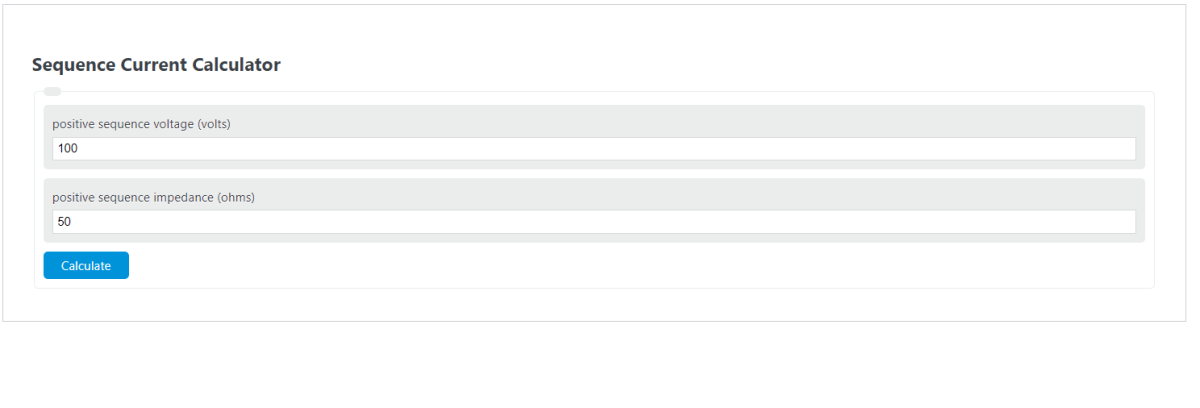Enter the positive sequence voltage (volts) and the positive sequence impedance (ohms) into the calculator to determine the Sequence Current.
- All Electrical Calculators
- Solenoid Current Calculator
- Shunt Current Calculator
- HP to Current Calculator
Sequence Current Formula
The following formula is used to calculate the Sequence Current.
Iseq = Vseq / Zseq
- Where Iseq is the Sequence Current (amps)
- Vseq is the positive sequence voltage (volts)
- Zseq is the positive sequence impedance (ohms)
To calculate the sequence current, divide the positive sequence voltage by the positive sequence impedance.
How to Calculate Sequence Current?
The following two example problems outline how to calculate the Sequence Current.
Example Problem #1:
- First, determine the positive sequence voltage (volts). In this example, the positive sequence voltage (volts) is measured to be 73.
- Next, determine the positive sequence impedance (ohms). For this problem, the positive sequence impedance (ohms) is calculated to be 4.
- Finally, calculate the Sequence Current using the formula above:
Iseq = Vseq / Zseq
Inserting the values from above and solving the equation with the imputed values gives:
Iseq = 73 / 4 = 18.25 (amps)
FAQ
What is positive sequence voltage?
Positive sequence voltage refers to a component of the system voltage in a three-phase electrical power system, which rotates in the same direction as the system’s power. It is one of the components used in symmetrical component analysis to simplify the study of unbalanced systems.
Why is calculating sequence current important in electrical engineering?
Calculating sequence current is crucial in electrical engineering because it helps in the analysis of power systems under unbalanced conditions. It allows engineers to assess the impact of unbalanced loads on the system’s performance, enabling them to design more efficient and reliable power systems.
Can sequence current calculation be applied to single-phase systems?
While the concept of sequence currents primarily applies to three-phase systems, understanding the principles behind it can also provide insights into the behavior of single-phase systems under certain conditions. However, the direct application of sequence current calculations is more relevant and common in the analysis of three-phase electrical power systems.
